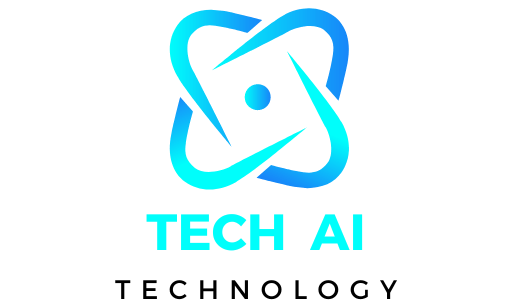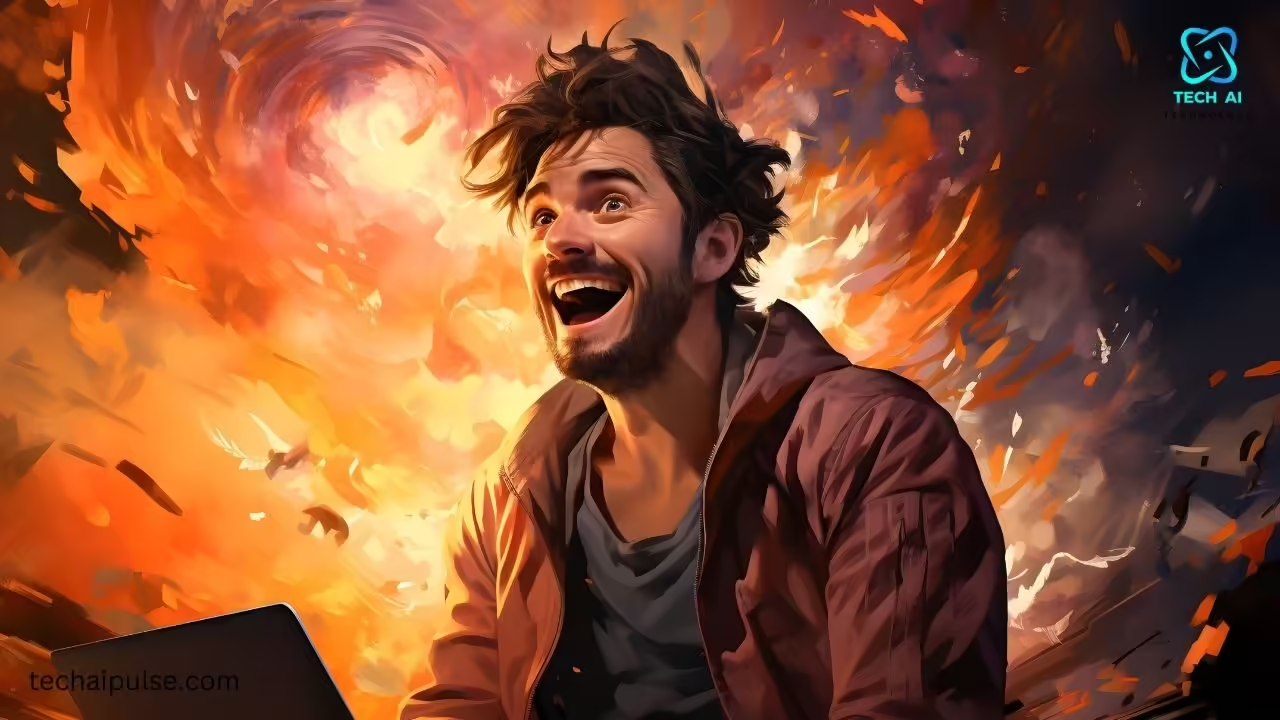In the ever evolving world of programming, BASIC (Beginner’s All purpose Symbolic Instruction Code) remains a key part of coding history. Once a go to language for beginners, it laid the foundation for modern programming concepts. But is BASIC in programming languages still useful today? With AI driven coding tools and advanced languages like Python and JavaScript dominating the industry, BASIC has evolved with modern variants like VB.NET and Small Basic.
Whether you’re a beginner learning coding fundamentals or a tech enthusiast exploring legacy languages, understanding BASIC’s impact can help you grasp core programming principles. Let’s dive into its modern role, real world applications, and future in 2025! 🚀
BASIC in Programming Languages: Is It Still Relevant in 2025?
What is BASIC in Programming Languages? (Direct Answer)
BASIC (Beginner’s All purpose Symbolic Instruction Code) is a high level programming language designed for simplicity and ease of learning. It was originally created in the 1960s to introduce beginners to coding.
Over the years, it has evolved into modern versions like Visual Basic (VB.NET) and Small Basic, which still hold educational value. While newer languages dominate software development, BASIC remains significant for learning core programming concepts and understanding the history of coding.
The Evolution of BASIC: From the Past to 2025
BASIC started as a simple command line programming language to make coding more accessible. Unlike complex languages like Assembly or Fortran, BASIC allowed users to write programs with minimal syntax. Over time, it evolved into versions like GW BASIC, QBasic, and Visual Basic, each improving functionality while maintaining ease of use.
In 2025, while modern programming languages like Python, JavaScript, and Swift dominate development, BASIC still serves an educational role, helping beginners grasp foundational concepts.
Is BASIC Still Used in Modern Programming?
While BASIC is no longer a primary language for professional software development, it is still used in specific domains. Educational platforms, embedded systems, and legacy software maintenance still rely on Visual Basichttps://en.wikipedia.org/wiki/Visual_Basic_(classic)#:~:text=Visual%20Basic%20was%20developed%20by,Visual%20Basic (VB.NET).
Small Basic, a modern variant, is used for teaching programming fundamentals in schools and coding boot camps. Although industries prefer modern languages for AI, web development, and mobile apps, BASIC remains relevant in academia and specific business applications.
BASIC vs. Modern Programming Languages: How Does It Compare?
Compared to languages like Python, JavaScript, and C++, BASIC lacks advanced features needed for large scale applications. However, it excels in simplicity, readability, and ease of learning, making it ideal for beginners.
Unlike Python’s object oriented flexibility or JavaScript’s web development capabilities, BASIC focuses on procedural programming, making it a stepping stone for learning core programming logic. While it may not be a top choice for software development, it still plays a role in teaching computational thinking.
Should You Learn BASIC in 2025?
If you are a beginner, learning BASIC can be a great starting point. It teaches programming fundamentals like loops, conditions, and variables without overwhelming syntax. For professionals, understanding BASIC helps in maintaining legacy applications and working with older software systems. However, if you aim for a career in software development, learning Python, JavaScript, or C++ is more beneficial.
The History and Evolution of BASIC
The Origin of BASIC: Who Created It and Why?
BASIC (Beginner’s All purpose Symbolic Instruction Code) was developed in 1964 at Dartmouth College by John Kemeny and Thomas Kurtz. They aimed to create an easy to learn programming language for students and beginners. Before BASIC, programming required complex languages like FORTRAN and assembly, making coding inaccessible to many. BASIC simplified coding with straightforward syntax and interactive programming features.
Early Versions of BASIC
GW BASIC
Released by Microsoft in the 1980s, GW BASIC was an early interpreter based version. It allowed users to write and execute simple programs directly. It was widely used on MS DOS systems and became popular for its ease of use.
QBasic
QBasic, an improved version of GW BASIC, was introduced in 1991 with MS DOS 5.0. It featured a user friendly IDE, error checking, and structured programming. Unlike its predecessor, QBasic removed line numbers and encouraged modular programming, making coding more efficient.
Turbo Basic
Turbo Basic, developed by Borland, provided fast compilation and additional functionalities. It improved execution speed compared to interpreted BASIC versions and introduced advanced features like structured programming and extended libraries.
Transition to Modern Variants
Visual Basic (VB.NET)
In 1991, Microsoft introduced Visual Basic (VB), a major evolution of BASIC. It brought a graphical user interface (GUI), event driven programming, and drag and drop components. In 2002, VB.NET replaced Visual Basic 6, integrating with the .NET framework, making it a powerful tool for Windows application development.
Small Basic
Microsoft launched Small Basic to bring back the simplicity of early BASIC while incorporating modern programming concepts. It is often used in educational settings to teach young programmers the fundamentals of coding.
How BASIC Influenced Modern Programming Languages
BASIC’s user friendly syntax and structured programming approach paved the way for many modern languages. It introduced interactive programming, a concept used in Python and JavaScript today. Visual Basic led to the development of low code platforms, influencing tools like PowerApps and Scratch. BASIC’s legacy remains strong in teaching, rapid prototyping, and GUI based development.
Top 3 Features of BASIC Programming Language in 2025

BASIC (Beginner’s All purpose Symbolic Instruction Code) is a simple yet powerful programming language. It remains popular for learning coding fundamentals due to its easy syntax and straightforward structure. Here are the key features that make BASIC unique:
1. Simple Syntax and Easy to Learn Structure
BASIC is known for its readable and beginner friendly syntax. Unlike complex programming languages, it uses straightforward commands like PRINT, INPUT, and GOTO. Its simple structure helps beginners understand logic flow, loops, and variables without technical jargon.
2. Line by Line Execution (Interpreted Language)
BASIC is an interpreted language, meaning it runs code line by line instead of compiling it first. This feature allows instant feedback, making debugging and learning easier. Developers can quickly test logic, modify instructions, and see results without long compilation times.
3. Support for Loops, Conditions, and Variables
BASIC includes essential programming constructs like loops (FOR, WHILE), conditional statements (IF THEN ELSE), and variables for data storage. These elements allow developers to create dynamic programs, automate repetitive tasks, and build interactive applications.
How BASIC Differs from Procedural and Object Oriented Languages
BASIC focuses on simple, sequential execution, unlike procedural languages (C, Pascal), which rely on structured routines and functions. It also lacks the class based architecture of object oriented languages (Java, Python), which use objects and inheritance. BASIC’s linear, command driven approach makes it ideal for quick coding and educational purposes.
Modern Variants of BASIC in 2025
Visual Basic (VB.NET): A Powerful Business Tool
Visual Basic (VB.NET) remains a dominant force in business applications and legacy software. In 2025, companies still rely on VB.NET for enterprise solutions, automation, and system integration.
It offers strong compatibility with Microsoft technologies, making it a preferred choice for financial systems, database management, and ERP software. Developers use VB.NET for its structured programming model, rapid application development (RAD) capabilities, and smooth integration with cloud based services like Azure.
Small Basic: Simplifying Programming for Beginners
Small Basic, Microsoft’s beginner friendly programming environment, continues to play a vital role in education. In 2025, it is widely used in schools to introduce programming fundamentals to young learners.
With a simplified syntax and an interactive learning experience, Small Basic bridges the gap between visual programming tools like Scratch and advanced coding languages. Educational institutions prefer Small Basic for its accessibility, encouraging logical thinking and problem solving skills among students.
FreeBASIC & QB64: Open Source Solutions for Classic Enthusiasts
FreeBASIC and QB64 are modern, open source alternatives to classic BASIC programming. These languages allow developers to run legacy BASIC code while supporting modern programming practices. In 2025, FreeBASIC is used for cross platform development, offering a high performance compiler for Windows, macOS, and Linux.
QB64, on the other hand, is popular for game development and educational purposes, as it retains compatibility with classic QBasic programs. Both tools are valued by retro computing enthusiasts, educators, and independent developers seeking simple yet powerful coding solutions.
How These Variants Are Used in Education and Industry
BASIC continues to serve distinct roles in both education and industry:
- Education: Schools and universities use Small Basic, QB64, and FreeBASIC to teach programming logic and syntax. These tools provide an easy learning curve, making programming accessible for beginners.
- Business Applications: VB.NET remains a key player in enterprise software, powering legacy systems and integrating with modern cloud services.
- Software Development: Open source variants like FreeBASIC and QB64 support independent developers, hobbyists, and researchers working on lightweight applications and legacy software maintenance.
- Game Development & Prototyping: QB64 allows game developers to experiment with classic game design elements while leveraging modern computing power.
Is BASIC Still Used in 2025?

BASIC (Beginner’s All purpose Symbolic Instruction Code) was once a dominant programming language. In 2025, it still holds relevance in specific areas, though its mainstream use has declined. Here’s how BASIC continues to be utilized today.
1. Educational Purposes: Teaching Coding Fundamentals
BASIC remains a valuable tool for teaching programming concepts. Many educators use it to introduce beginners to coding. Its simple syntax helps students grasp logic, loops, and functions easily. While modern languages like Python and JavaScript dominate, BASIC still appears in introductory courses and legacy coding tutorials.
2. Legacy Systems: Companies Maintaining Old Applications
Many businesses still rely on legacy applications built with BASIC. Updating or rewriting these systems is costly and time consuming. Some industries, such as finance and manufacturing, continue to maintain BASIC based software. These applications often run on older mainframes, making support for BASIC essential.
3. Embedded Systems: BASIC in Hardware Programming
BASIC is used in embedded systems and microcontrollers. Some industrial and medical devices run on BASIC based firmware. Variants like Visual Basic for Applications (VBA) are still common in automation tasks. Engineers and developers working with older hardware often prefer BASIC due to its compatibility and ease of use.
4. How AI and Automation Have Changed BASIC’s Role
AI and automation have transformed software development. BASIC is now less common for new projects but remains in automation tools and low code platforms. AI driven code generation tools can now convert BASIC into modern programming languages. Automation has also reduced the need for manual BASIC scripting in business applications.
BASIC vs. Modern Programming Languages: A 2025 Comparison
BASIC was once the go to language for beginners. But in 2025, how does it compare to modern programming languages like Python, JavaScript, C++, and Java? This article explores the advantages and limitations of BASIC and when it makes sense to use it over other languages.
BASIC vs. Modern Programming Languages: Key Differences
BASIC (Beginner’s All purpose Symbolic Instruction Code) was designed for simplicity. Modern programming languages like Python, JavaScript, C++, and Java offer advanced features and better performance. Here’s a quick comparison:
| Feature | BASIC | Python | JavaScript | C++ | Java |
|---|---|---|---|---|---|
| Ease of Learning | ✅ Very Easy | ✅ Easy | ⚠️ Moderate | ❌ Complex | ⚠️ Moderate |
| Performance | ❌ Slow | ⚠️ Moderate | ⚠️ Moderate | ✅ High Speed | ✅ High Speed |
| Use Cases | Basic apps, learning | AI, automation | Web dev, apps | Game dev, performance apps | Enterprise apps |
| Support & Libraries | ❌ Limited | ✅ Extensive | ✅ Huge | ✅ Large | ✅ Strong |
Advantages of BASIC for Beginners
- Simple Syntax: BASIC is easy to understand, making it great for beginners.
- Quick Learning Curve: No complex concepts like object oriented programming.
- Ideal for Teaching: Used in educational settings to introduce coding fundamentals.
- Interactive Environment: Many BASIC interpreters allow real time execution.
Limitations of BASIC in Professional Software Development
- Lack of Advanced Features: No support for modern programming paradigms like OOP and multithreading.
- Poor Performance: Runs slower compared to compiled languages like C++ and Java.
- Limited Real World Use: Not widely used for professional applications.
- Outdated Ecosystem: Fewer libraries, frameworks, and developer support.
When to Choose BASIC Over Other Programming Languages
- For Absolute Beginners: If you’re new to coding and want to learn basic logic.
- For Educational Purposes: Schools still use BASIC to teach programming basics.
- For Simple Projects: Ideal for small scale personal projects or retro programming.
Should You Learn BASIC in 2025? A Smart Choice or a Waste of Time?
BASIC was once the go to programming language for beginners. But in 2025, is it still relevant? Let’s explore who should learn BASIC, the skills you can gain, and whether it has career potential today.
Who Should Learn BASIC?
BASIC is a simple, beginner friendly language. It’s great for:
- Beginners: If you’re new to coding, BASIC helps build problem solving skills.
- Hobbyists: Retro computing fans use BASIC to program old school systems.
- Legacy System Developers: Many businesses still run BASIC based applications.
Learning BASIC can be a fun way to understand coding fundamentals. But is it worth your time in 2025?
Skills You Can Gain from Learning BASIC
Despite being old, BASIC still teaches:
- Programming Logic: Understanding loops, conditions, and variables.
- Structured Thinking: Writing clean, step by step code.
- Debugging Skills: Learning to fix code errors efficiently.
Many modern languages like Python and JavaScript share similar concepts. Learning BASIC can help transition into these languages.
Best Resources to Learn BASIC in 2025
You won’t find BASIC on most modern platforms, but a few resources still exist:
- Vintage BASIC: An emulator for classic BASIC programming.
- Small BASIC: A lightweight, cross platform interpreter.
- Books & YouTube Tutorials: Many free guides explain BASIC programming.
Future Career Opportunities with BASIC Knowledge
BASIC is not a high demand language today, but it has niche applications:
- Maintaining Legacy Systems: Some industries still use BASIC based software.
- Game Development: Classic style games use BASIC inspired scripting.
- Educational Coding: Teaching programming fundamentals in schools.
While BASIC isn’t a primary career choice, learning it can boost logical thinking and help in transitioning to modern languages.
How to Get Started with BASIC Programming

BASIC (Beginner’s All purpose Symbolic Instruction Code) is a simple and beginner friendly programming language. It is designed to help new learners understand coding concepts without complex syntax. This guide will walk you through setting up a BASIC environment, writing your first program, understanding commands, and troubleshooting errors.
1. Setting Up a BASIC Development Environment
To start programming in BASIC, you need the right software. First, choose a BASIC interpreter, which is a tool that runs BASIC code. Some popular options include QBasic, FreeBASIC, and Vintage BASIC. After selecting one, download and install it on your computer.
Some interpreters have built in editors where you can type and run code, while others may require a simple text editor. Once installed, test the setup by running a simple command to check if the environment is working properly.
2. Writing Your First BASIC Program
The first step in learning any programming language is writing a simple program that displays a message on the screen. In BASIC, this involves using a command that prints text. This helps you understand how instructions are given to the computer.
The process includes typing the command, running it, and seeing the result displayed. This simple task builds confidence and introduces you to how BASIC programs work.
3. Understanding BASIC Commands and Syntax
BASIC uses easy to remember commands that make coding accessible. Some of the most commonly used commands include instructions to display messages, take user input, assign values to variables, make decisions, and repeat actions in a loop. These commands follow a simple structure that allows even complete beginners to understand and write functional programs.
For example, to show a message on the screen, a command tells the computer what to display. If user interaction is needed, another command allows input. Conditions help the program make decisions, such as responding differently based on what the user enters. Loops are used to repeat tasks multiple times, making programs more efficient.
4. Common Errors Beginners Face and How to Fix Them
New programmers often encounter mistakes when writing BASIC code. One common error is syntax mistakes, which happen when a command is not written correctly. Checking the rules of the language and carefully typing instructions can help fix these issues.
Another frequent mistake is using variables without defining them first, which causes errors when the program runs. Ensuring that all necessary values are set before using them prevents this problem. Additionally, mistakes in loops can lead to endless repetitions or skipped steps. Double checking the logic and structure of loops helps avoid these errors
The Future of BASIC in Programming: Will It Still Matter in 2025?
Will BASIC Continue to Evolve?
BASIC (Beginner’s All purpose Symbolic Instruction Code) was once a dominant programming language. Today, its relevance has declined with modern languages like Python and JavaScript taking the lead. However, some versions of BASIC, like Microsoft Small Basic and FreeBASIC, continue to evolve. Developers still use it for education, legacy system maintenance, and hobbyist projects.
How AI Powered Coding Tools Impact BASIC’s Relevance
AI powered tools like GitHub Copilot and ChatGPT are transforming coding. They provide auto completions, code explanations, and debugging assistance. These advancements make complex languages easier to learn, reducing the need for beginner friendly languages like BASIC.
However, AI driven tools can also enhance BASIC by automating repetitive tasks, making it more accessible for learners and nostalgic developers.
The Role of BASIC in Coding Education
BASIC played a crucial role in introducing programming to beginners. While modern schools now prefer Python due to its versatility, BASIC still offers a simple syntax ideal for first time programmers. Platforms like Small Basic keep the language alive in education, ensuring that new learners understand fundamental coding concepts before moving to advanced programming languages.
Predictions for BASIC in the Next Decade
BASIC is unlikely to regain mainstream popularity, but it will persist in niche areas. It may survive as an educational tool for absolute beginners and as a legacy programming language for maintaining old systems. AI advancements could bring new life to BASIC by integrating it into learning platforms with AI tutors that simplify coding concepts.
FAQs:
Q1. What is BASIC in Programming Languages?
BASIC (Beginner’s All purpose Symbolic Instruction Code) is a high level programming language designed for beginners. It was created in the 1960s to simplify coding and has evolved into modern versions like Visual Basic (VB.NET) and Small Basic.
Q2. Is BASIC Still Used in 2025?
Yes, BASIC is still used in educational settings, legacy system maintenance, and some embedded systems. While it’s not a dominant language in modern software development, it remains relevant for teaching programming fundamentals.
Q3. What Are the Modern Variants of BASIC?
The most common modern versions of BASIC include:
- Visual Basic (VB.NET): Used for Windows application development.
- Small Basic: A simplified version for learning programming.
- FreeBASIC & QB64: Open source alternatives for hobbyists and developers.
Q4. Is BASIC a Good Language for Beginners?
Yes! BASIC has simple syntax, easy to read code, and minimal complexity, making it perfect for beginners. It helps in understanding programming logic before transitioning to advanced languages like Python or JavaScript.
Q5. How Does BASIC Compare to Python and JavaScript?
- BASIC is beginner friendly but lacks advanced features for modern software development.
- Python is widely used for AI, data science, and web development.
- JavaScript is essential for front end and full stack web development.
- BASIC is best for learning fundamentals, while Python and JavaScript are industry standard.
Q6. Can I Use BASIC for Web Development?
No, BASIC is not designed for web development. If you want to build websites, JavaScript, HTML, and CSS are the best choices. However, Visual Basic (VB.NET) can be used for Windows based applications.
Q7. What Are Some Practical Uses of BASIC Today?
- Teaching programming in schools and universities.
- Maintaining legacy applications built in older BASIC versions.
- Programming small scale embedded systems.
- Hobbyist projects and personal scripting.
Q8. What Is the Easiest Way to Learn BASIC in 2025?
You can learn BASIC through online platforms like:
- Microsoft Small Basic (Beginner friendly coding).
- Visual Basic (VB.NET) tutorials on YouTube and online courses.
- QB64 and FreeBASIC communities for open source learning.
Q9. Will BASIC Continue to Exist in the Future?
Yes, but mainly in education and legacy system maintenance. While it won’t replace modern languages, its simplicity ensures it remains a useful learning tool.
Q10. Should I Learn BASIC or Another Language First?
If you’re completely new to programming, BASIC is a good starting point. However, if you aim for a career in software development, Python, JavaScript, or C++ are better long term choices.
Conclusion:
BASIC in programming languages remains a valuable tool for beginners, educators, and those maintaining legacy systems. While it may not compete with modern languages like Python or JavaScript, its simple syntax and ease of learning make it a great starting point for coding.
In 2025, BASIC continues to serve as a foundation for programming education and a bridge to more advanced technologies. Whether you’re exploring coding for the first time or working with legacy software, BASIC still has its place in the digital world. 🚀

